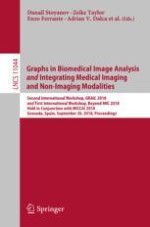2018 | OriginalPaper | Chapter
Multi-modal Disease Classification in Incomplete Datasets Using Geometric Matrix Completion
Authors : Gerome Vivar, Andreas Zwergal, Nassir Navab, Seyed-Ahmad Ahmadi
Published in: Graphs in Biomedical Image Analysis and Integrating Medical Imaging and Non-Imaging Modalities
Publisher: Springer International Publishing
Activate our intelligent search to find suitable subject content or patents.
Select sections of text to find matching patents with Artificial Intelligence. powered by
Select sections of text to find additional relevant content using AI-assisted search. powered by
